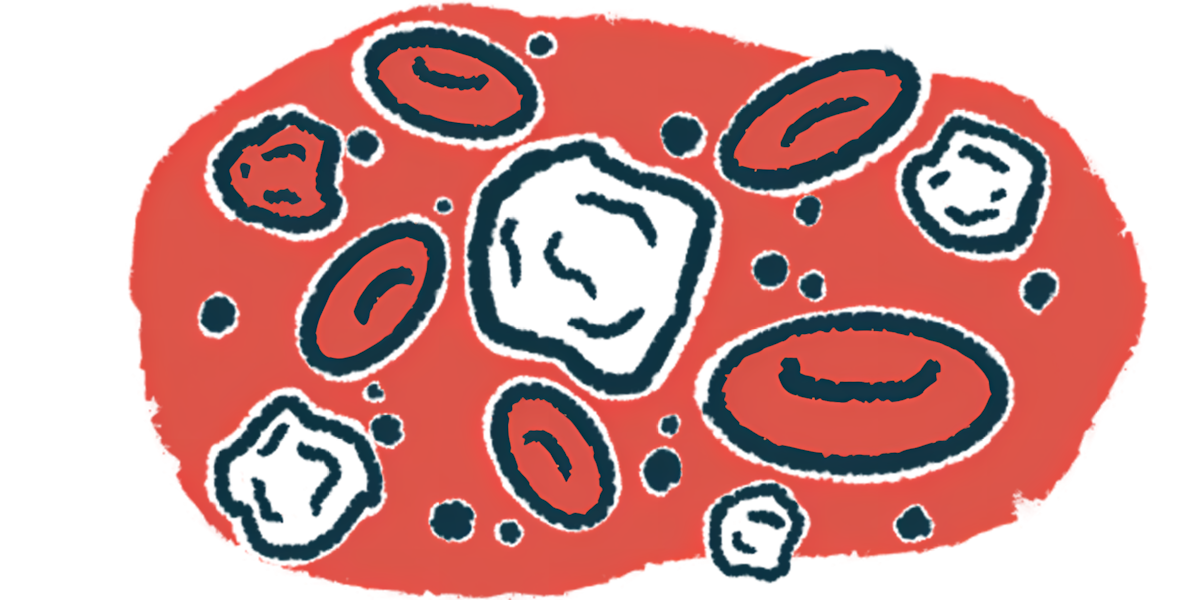B-cell levels can predict PIRA risk in relapsing MS patients on Ocrevus
Insufficient B-cell depletion linked to higher risk of disability progression: Study

In people with relapsing forms of multiple sclerosis (MS) treated with Ocrevus (ocrelizumab), levels of B-cells can help to predict the risk of progression independent of relapse activity, a new study reports.
“Our results unveil a discernible relationship between the degree of B-cell depletion and disease progression in individuals with [relapsing] MS,” researchers wrote.
The study, “Suboptimal B-cell depletion is associated with progression independent of relapse activity in multiple sclerosis patients treated with ocrelizumab,” was published in Multiple Sclerosis Journal.
MS is caused by inflammation that damages healthy tissue in the brain and spinal cord. Most people with MS have relapsing forms of the disease, which are marked by flares where symptoms suddenly worsen.
Symptoms generally ease after a relapse, but some symptoms from a relapse can persist and become permanent — this is called relapse-associated worsening. People with relapsing MS can also experience progression independent of relapse activity (PIRA), where symptoms get worse in the absence of disease flares.
Ocrevus works to deplete B-cells
Ocrevus is widely approved to treat relapsing MS as well as primary progressive disease. The therapy works by depleting B-cells, a type of immune cell with a central role in MS-driving inflammation.
In the study, researchers in Germany wanted to examine factors that are associated with the risk of PIRA in people with relapsing MS taking Ocrevus.
The analysis included data on 148 people with relapsing MS who were treated with Ocrevus from 2017 to 2023. Over the course of follow-up, 47% of the patients had no evidence of disease activity (NEDA), meaning they didn’t experience relapses or signs of new disease activity on MRI scans, and had no confirmed disability accumulation, defined as an increase in Expanded Disability Status Scale (EDSS) scores sustained for at least six months. Another 17% of patients experienced PIRA.
The remaining 34% of patients experienced some signs of disability progression, but those did not meet the criteria for confirmed disability accumulation to be considered PIRA. Instead, they were classified as patients with evidence of disease activity (EDA) without fulfilling PIRA criteria.
Statistical analyses accounting for age, sex, body fat, initial disability levels, and treatment duration showed that patients who had NEDA had significantly lower levels of B-cells than those who experienced PIRA or EDA. There was a clear gradient in B-cell levels across the three groups, with NEDA patients showing the lowest counts, EDA patients showing intermediate levels, and PIRA patients having the highest B-cell counts.
This implies “that the degree of B-cell depletion may be associated with disease progression,” the researchers wrote.
In the statistical models comparing PIRA versus NEDA patients and adjusting for multiple other factors, older age, initial EDSS scores, treatment duration, and B-cell counts were all significantly associated with PIRA.
For example, the odds of experiencing PIRA increased by 3% with each year added to a person’s age, and by 64% with each point increase (indicating more severe disability) in initial EDSS scores. Those who were on treatment for longer were also 30% more likely to experience PIRA.
By far the strongest predictor of PIRA was insufficient B-cell depletion. Patients with B-cell counts of 10 cells per microliter of blood or higher were nearly four times as likely to experience PIRA as patients with lower B-cell counts.
Lower B-cell counts associated with reduced risk of overall disability worsening
Lower B-cell counts were also associated with a reduced risk of overall disability worsening, whether from PIRA or relapse-associated worsening. Collectively, the data suggest that, for MS patients on Ocrevus, insufficient B-cell depletion is associated with an increased risk of disability progression.
“Our study provides evidence that PIRA occurs in the context of suboptimal B-cell depletion in a relevant proportion of patients with [relapsing] MS. This underscores the importance of closely monitoring B-cell counts and potentially adjusting infusion intervals,” the researchers wrote.
This implies that patients who don’t experience sufficient B-cell depletion may benefit from higher doses of Ocrevus or shorter treatment intervals, though the researchers stressed that further testing will be necessary to assess whether such interventions are safe and effective. They also noted that this analysis was limited to patients at a single center, so additional studies are necessary to validate the results.
“Moving forward, a nuanced understanding of B-cell dynamics will be pivotal for refining treatment strategies and improving outcomes for patients with [relapsing] MS,” the scientists concluded.
Ocrevus is sold by Genentech, a subsidiary of Roche. The company was not involved in this study.








